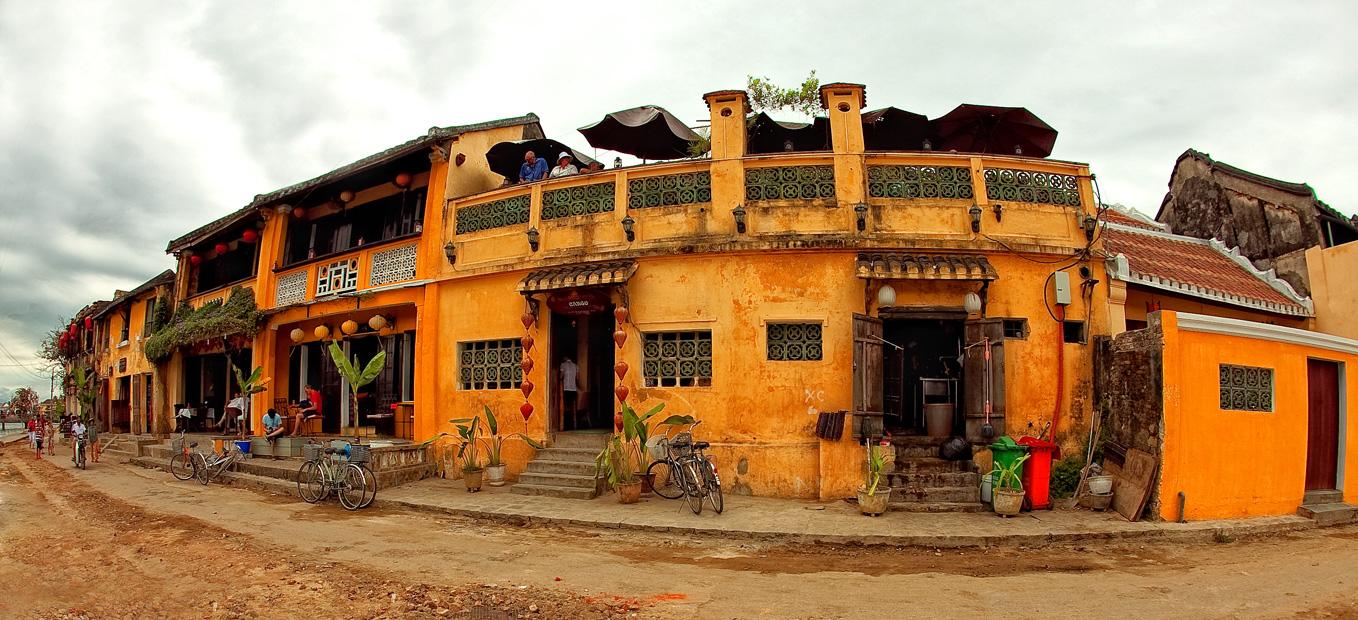
HOI AN ANCIENT TOWN - WORLD CULTURAL HERITAGE
Researchers said most of the buildings in Hoi An underwent restoration at the beginning of the 19th century, even if they might be constructed long time ago. The ancient architecture shown most clearly in the Ancient Town that located in Minh An Ward. It covers about 2 square kilometres and almost of all famous relics in Hoi An are gathered here. The streets are very short and narrow, having a winding, crossing as the chessboard style
Hoi An is an old town down the Thu Bon River, on the coastal plain of Quang Nam Province, about 30 km south of Danang City. Hoi An used to be known on the international market with many different names such as Lam Ap, Faifo, Hoai Pho and Hoi An.
What is so special about Hoi An is that this little port town is in an incredible state of preservation. It offers some of the most densely-concentrated sights in Vietnam with its old streets bordered with ancient houses and assembly halls, its pagodas, temples, ancient wells and tombs. In total, more than a thousand places of interest. The architecture of Hoi An is characterised by a harmonious blend of Vietnamese, Chinese and Japanese influences. After many centuries, Hoi An is still respectful of its traditions, folk festivals, beliefs and of its sophisticated culinary art. Set in a quiet environment, Hoi An is surrounded by peaceful villages that have crafts such as carpentry, bronze making, ceramic...
Researchers said most of the buildings in Hoi An underwent restoration at the beginning of the 19th century, even if they might 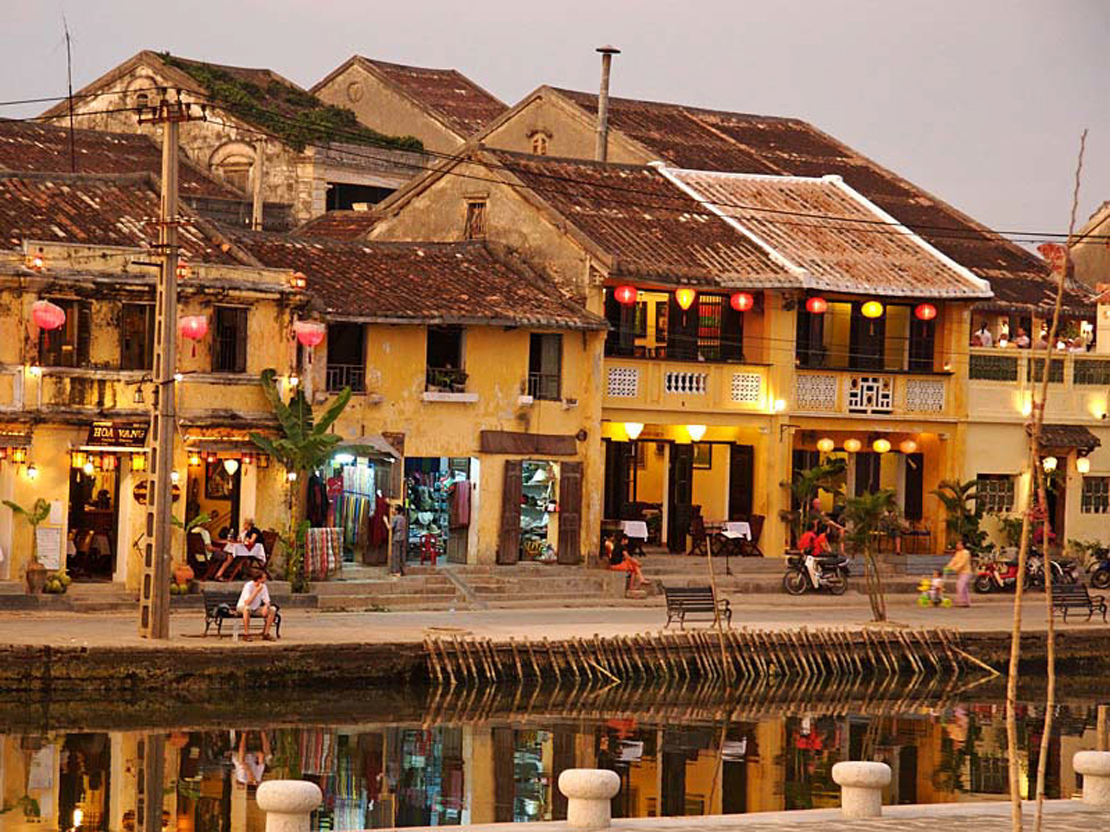 be constructed long time ago. The ancient architecture shown most clearly in the Ancient Town that located in Minh An Ward. It covers about 2 square kilometres and almost of all famous relics in Hoi An are gathered here. The streets are very short and narrow, having a winding, crossing as the chessboard style. The topography of the ancient town tilt gradually from north to south. The buildings in the old town is built mostly with traditional materials such as: brick, wood and no more than two floors. The traces of time is able to find not only on the architectural design of each building but also everywhere like: on the yin-yang roof tiles covered with moss and plants; the old gray mold walls; the pictures carved on a strange animal, or describing a old story… Having inherited a multi-cultural architecture so varied and sophisticated, Hoi An must have attracted numerous and talented workers in carpentry, ceramics, and woodcarving from China, Japan and other regions of Vietnam.
be constructed long time ago. The ancient architecture shown most clearly in the Ancient Town that located in Minh An Ward. It covers about 2 square kilometres and almost of all famous relics in Hoi An are gathered here. The streets are very short and narrow, having a winding, crossing as the chessboard style. The topography of the ancient town tilt gradually from north to south. The buildings in the old town is built mostly with traditional materials such as: brick, wood and no more than two floors. The traces of time is able to find not only on the architectural design of each building but also everywhere like: on the yin-yang roof tiles covered with moss and plants; the old gray mold walls; the pictures carved on a strange animal, or describing a old story… Having inherited a multi-cultural architecture so varied and sophisticated, Hoi An must have attracted numerous and talented workers in carpentry, ceramics, and woodcarving from China, Japan and other regions of Vietnam.
For centuries, Hoi An had developed into a melting pot of various nationalities who came to the area, bringing along their own cultures. Accordingly, Hoi An features the co-existence of indigenous customs and habits and those imported by foreign settlers. There are animist cults, of the Genie-Whale and worship of deities of natural phenomena (such as rain, wind, thunder), but also the worship of Holy Protectors like Thien Hau, Quan Cong, Bao Sinh Dai De, Avalokitesvara, especially among the Chinese community. They hold regular festivals or cultural and religious activities on the occasion of Tet Nguyen Tieu (the 16th day of the 1st lunar month), Thanh Minh (3rd lunar month), Doan Ngo (the 5th day of the 5th lunar month), Trung Thu (the 15th day of the 8th lunar month), Trung Cuu (the 9th day of the 9th lunar month), and Ha Nguyen (the 15th day of the 10th lunar month).
The social and cultural diversity adds up to the uniqueness of Hoi An’s inhabitants. Rich in traditions and early exposed to the 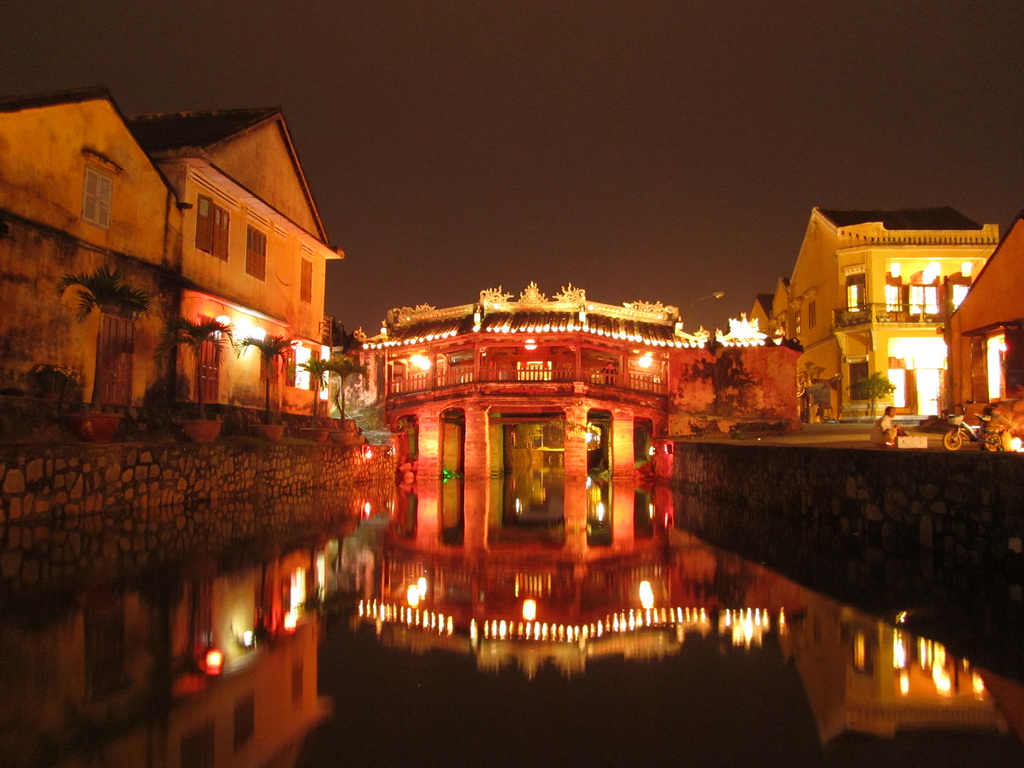 outside world, the Hoi An people feature a unique cultural identity, which has been well preserved from generation to generation. Lives of people who stay here incline to be interior with subtle quiet. In the mind of the natives of Hoi An, this town constitutes a large ancient home that shelters a big family of many descendants including hospitable dwellers, friendly hosts and hostesses, kind-hearted women, obedient children and so on. They together form a harmonious community who has lived peacefully side by side through successive generations.
outside world, the Hoi An people feature a unique cultural identity, which has been well preserved from generation to generation. Lives of people who stay here incline to be interior with subtle quiet. In the mind of the natives of Hoi An, this town constitutes a large ancient home that shelters a big family of many descendants including hospitable dwellers, friendly hosts and hostesses, kind-hearted women, obedient children and so on. They together form a harmonious community who has lived peacefully side by side through successive generations.
Upon reaching Hoi An, visitors will immediately feel the hospitality and friendship the locals extend to them. One thing that has withstood the test of time, one thing that the Hoi An people today can be proud of and therefore, make every efforts to preserve is their popular ho (chants) and age-old cultural festivals. Among them, the "Nights of Hoi An" is held on the 14th night of every lunar month. Visitors can immerse themselves in a festive atmosphere imbued with the traditional identities of Hoi An.
The architectural significance of Hoi An has been recognized by UNESCO, during the 23rd Congress which took place in Marrakech (Morocco) from the 29th of November to the 4th of December 1999, since the town was officially listed as a World Cultural Heritage Site.
ATTRACTIONS:
In the ancient town: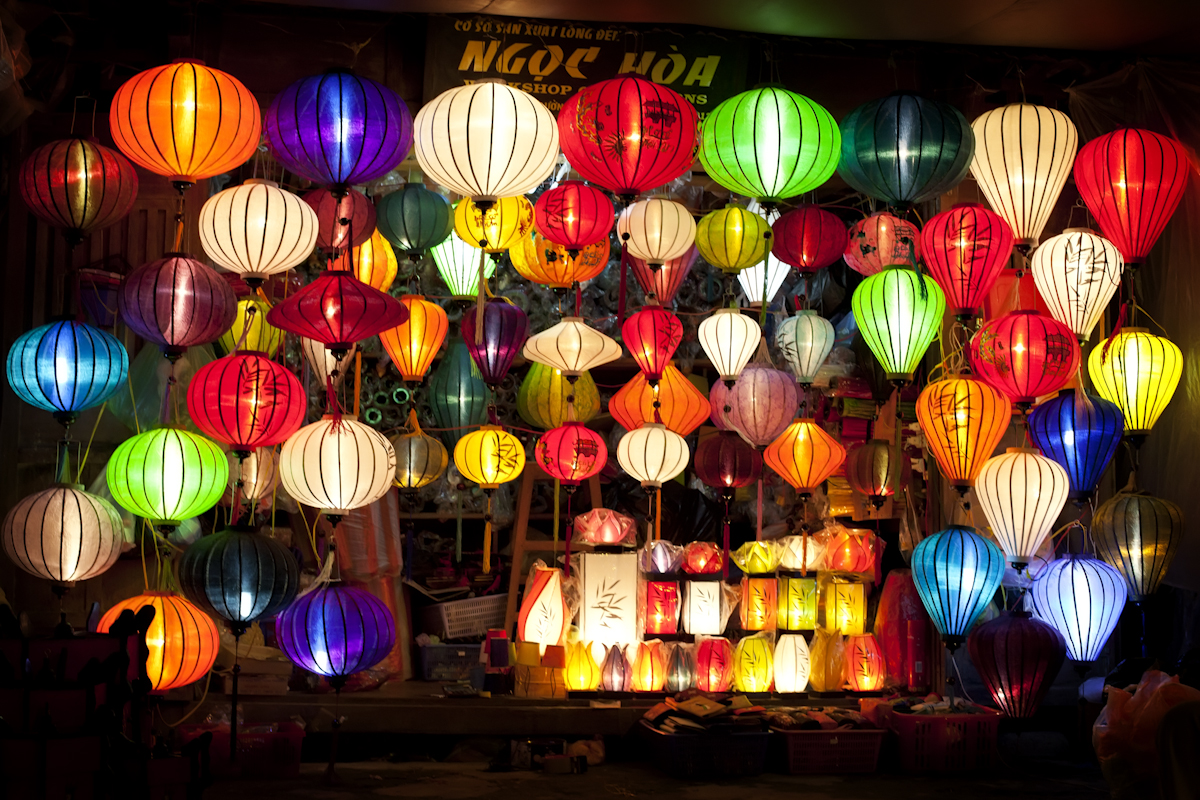
- Chua Cau (Japanese Bridge)
- Old Houses: Quan Thang Old House (77 Tran Phu); Diep Dong Nguyen Old House (80 Nguyen Thai Hoc) Tan Ky Old House (101 Nguyen Thai Hoc); Phung Hung Old House (4 Nguyen Thi Minh Khai); Tran Family Chapel (21 Le Loi)
- Ancient Wells: Ba Le Well (Kiet Gieng Alley, Minh An Ward)
- Assembly Halls: Quang Dong Assembly Hall (17 Tran Phu); Phuoc Kien Assembly Hall (46 Tran Phu); Trieu Chau Assembly Hall (157 Nguyen Duy Hieu); Hai Nam Assembly Hall (10 Tran Phu)
- Museums: Museum of Trade Ceramics Hoi An (80 Tran Phu), Museum of Sa Huynh Culture (149 Tran Phu); Hoi An Museum of History and Culture (7 Nguyen Hue); Hoi An Museum of Folk Culture (33 Nguyen Thai Hoc)
- Lantern Manufacturers: Ha Linh Lantern Manufacturer (72 Tran Nhan Tong); Huynh Van Ba Lantern Manufacturer (54 Nguyen Thi Minh Khai)
Surroundings:
- Cua Dai Beach;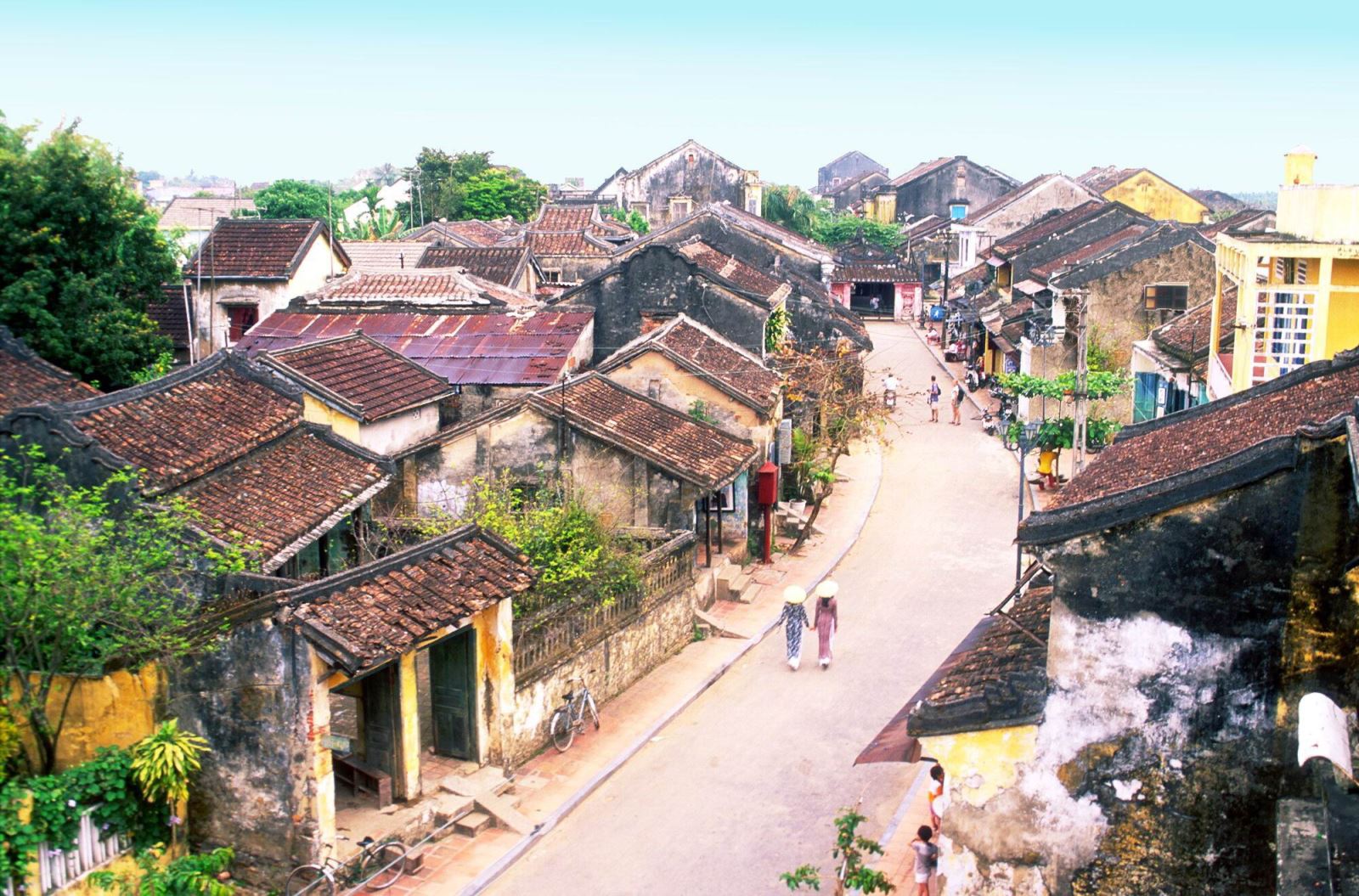
- Bay Mau Coconut Forest;
- Cu Lao Cham;
- Tra Que Vegetable Village;
- Thanh Ha Pottery Village;
- Kim Bong Carpentry Village;
- Tombs of the Japanese traders
- CENTRAL SECTOR OF THE IMPERIAL CITADEL OF THANG LO
- QUAN HO BAC NINH FOLK SONGS
- MY SON SANCTUARY - WORLD CULTURAL HERITAGE
- CA TRU SINGING
- THE SPACE OF GONG CULTURE IN CENTRAL HIGHLANDS
- NHA NHAC, VIETNAMESE COURT MUSIC
- COMPLEX OF HUE MONUMENTS - WORLD CULTURAL HERITAGE
- HA LONG BAY - WORLD NATURAL HERITAGE


 Royal Gate
Royal Gate
 NIKKO HANOI
NIKKO HANOI
 Trade Union Hotel Hanoi (Congdoan hotel)
Trade Union Hotel Hanoi (Congdoan hotel)
.jpg) Cultural Hanoi
Cultural Hanoi
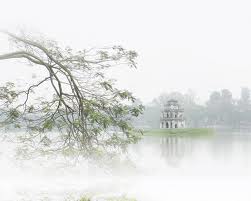 North Vietnam Exclusive
North Vietnam Exclusive
 Attractive North
Attractive North
 Charming North
Charming North

